Geometry may have been a dull subject at school for some of us, but it has had a significant influence on the design of our gardens through the ages. The use of geometry as a design tool has taken us on an interesting journey from the ancient gardens of Persia to the parterres of Renaissance Europe and even to our contemporary gardens.
The shapes in our garden greatly influence the way we view and experience it. We use circles, squares, rectangles and triangles, divided and connected to one another, to mesh into formal design. Geometric shapes delineate boundaries, create spaces and channel views.
Here's a selection of gardens that show clear use of geometrics in their design, from simple linear gardens to knot gardens, two-dimensional gardens and contemporary three-dimensional landscapes.
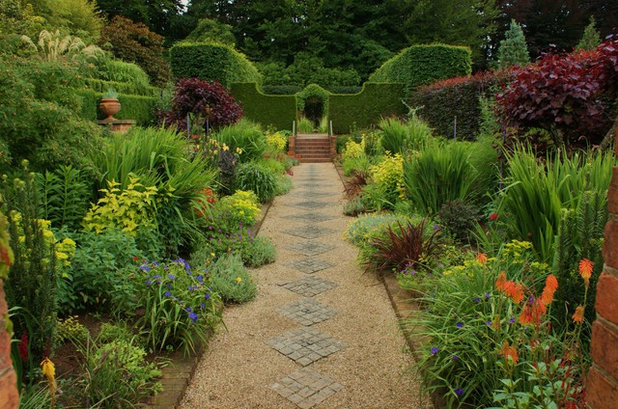
www.KarlGercens.com
Just as rooms need a focus, such as a fireplace or a window, gardens with simple geometric designs also need a point on which the eye can rest. This traditional design consisting of a central axis that divides the area has an archway to another garden as its main focus.
Using a central path with a distant viewpoint is a great way to make a short garden seem longer.

Harold Leidner Landscape Architects
The perfect symmetry of these simple geometric designs allows for the opportunity to decorate the flat planes created. Renaissance Europe saw the use of parterres and knot gardens in which simple — and later more complicated — shapes were delineated with low-growing evergreen plants. At first, as in this modern version of a knot garden, colored gravel was laid between the evergreen "lines."
See more about parterre gardens
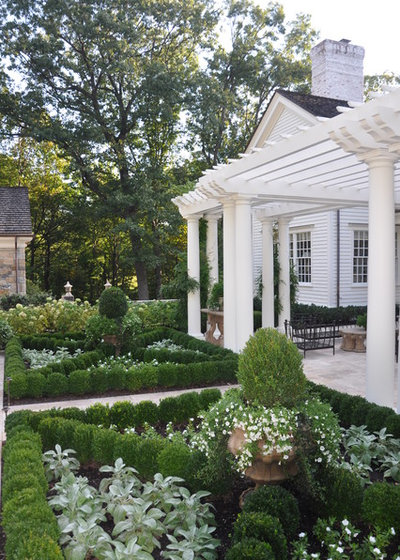
Deborah Cerbone Associates, Inc.
Later these basically two-dimensional designs were "embroidered" with plants, creating a richly colored pattern. This contemporary take on a knot garden uses a simple mixture of whites and grays to re-create this ordered style around the most basic of geometric shapes: squares and triangles.
Small knot gardens can be a practical and decorative way to grow culinary herbs.

Isler Homes
Perhaps the simplest use of geometry and basic shapes in the garden is this very contemporary take on a French parterre. The overall square boundary is bordered with a line of clipped conifers echoing the central squares of evergreen "box" plants. We even have a "viewpoint" in the placement of the simple, classically designed bench.
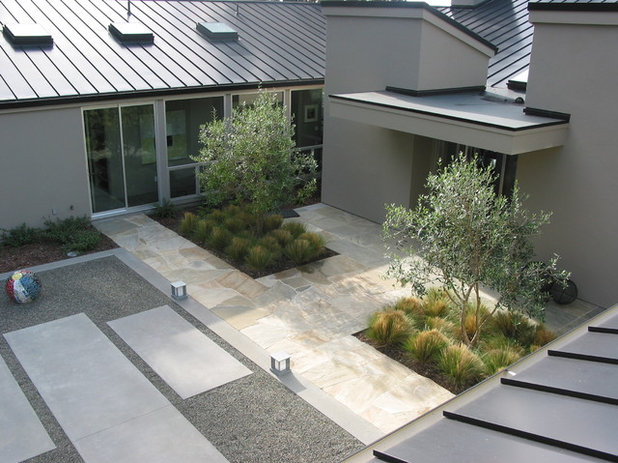
Randy Thueme Design Inc. - Landscape Architecture
This very modern courtyard garden has its roots in the past with its formally planted low beds — this time using grasses — in a symmetrical design.
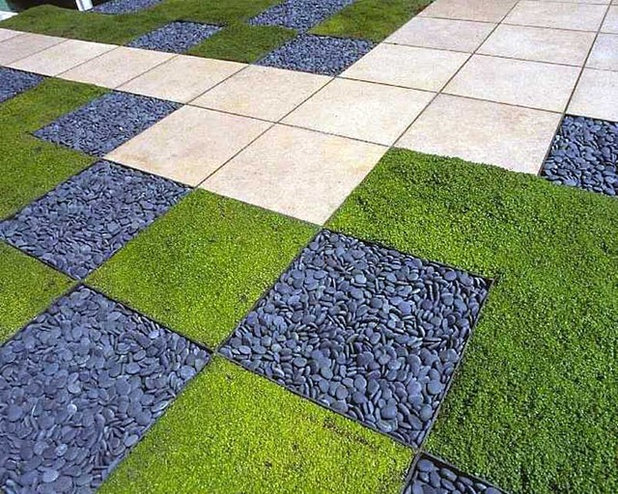
Ron Herman Landscape Architect
The simplest two-dimensional design can be the most satisfying. In the 1930s, Dutch designer Mein Ruys was using interesting new ideas to give her gardens a framework. She laid a Mondrian-style grid on the ground to divide up the space. She then planted some areas while leaving others bare.
Here we see a modern version of that using identical squares of grass, paving and pebbles — an almost maintenance-free design that would be perfect for a front garden.

Blakely and Associates Landscape Architects, Inc.
Two-dimensional design is still very important today. The use of shape and line here, even without any plants, creates both interest and movement in a satisfying design based on the classical rules of scale and proportion.
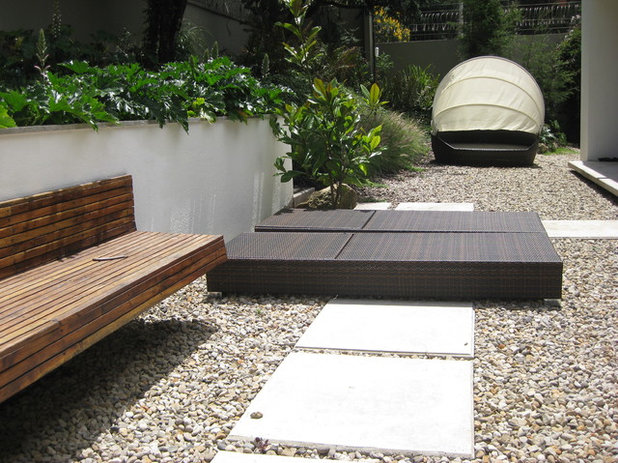
Adriana Aristizabal
The evolution of the modern three-dimensional design began in the middle of the 20th century when development in visual arts spread through architecture and eventually influenced garden design. The use of raised planted beds and even the positioning and height of the chaises seen here show how we have moved on from simple pattern making to creating a usable space.
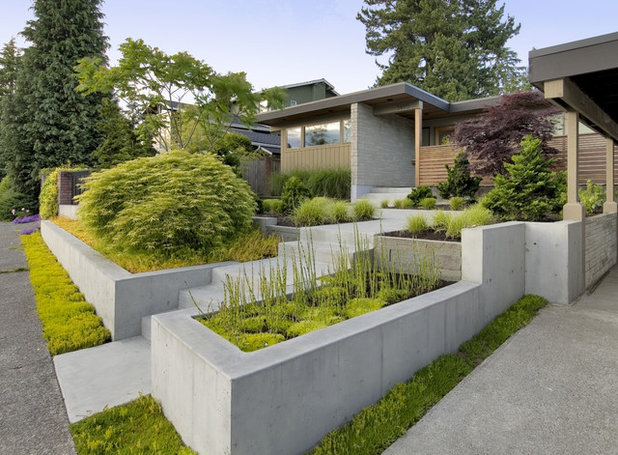
SHKS Architects
The three-dimensional design of this front garden almost has its roots in the paintings of the 20th-century artist Mondrian. Its strong geometric-shape raised beds of differing heights are reinforced by the width of the retaining walls. All is softened, though, by the beautifully executed and understated plantings.
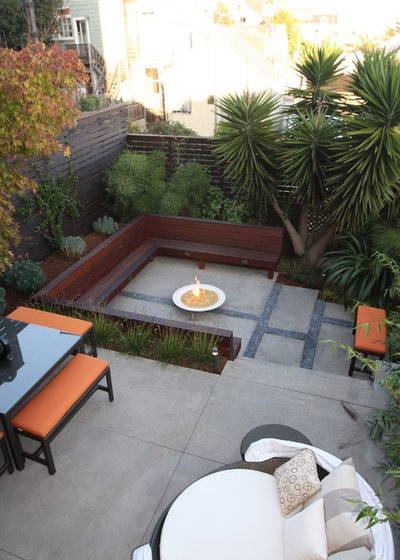
Outer space Landscape Architecture
Modern formal gardens use geometry to define private outdoor spaces, and smaller gardens require clean lines and minimal features to allow for multifunctional uses. Geometrics aid this design. The strong rectangular shape of this table and bench, for example, reinforce the clean lines.
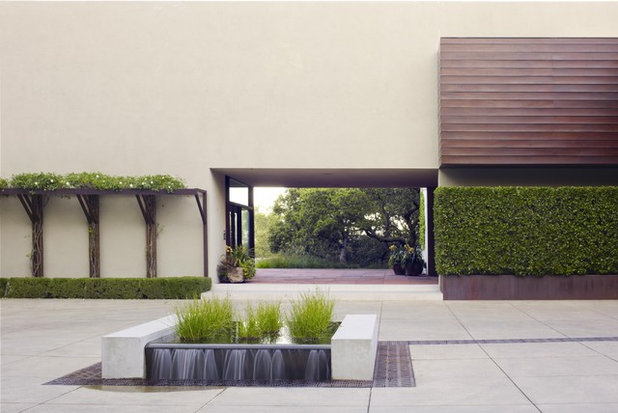
Blasen Landscape Architecture
Geometry can transform space into a cutting-edge landscape. Here we see the epitome of geometric garden design. The combination of lines, right angles and simple shapes works well, creating a clean, calm and uncluttered look.
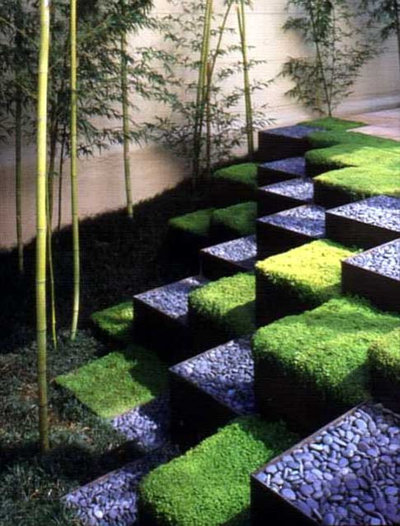
Ron Herman Landscape Architect
The ultimate display of geometrics is seen here in this checkerboard design by the architect Ron Herman. The inspiration came from moss and stone Zen temple gardens in Kyoto, Japan. The grid layout of cubes is surfaced with smooth river pebbles and Helxine
(Soleirolia soleirolii), while a vertical accent is provided by slim bamboo.
More:Keep Your Gardens in Lines
Give Your Small Garden Some Room
More Ideas for Stylish Outdoor Living





